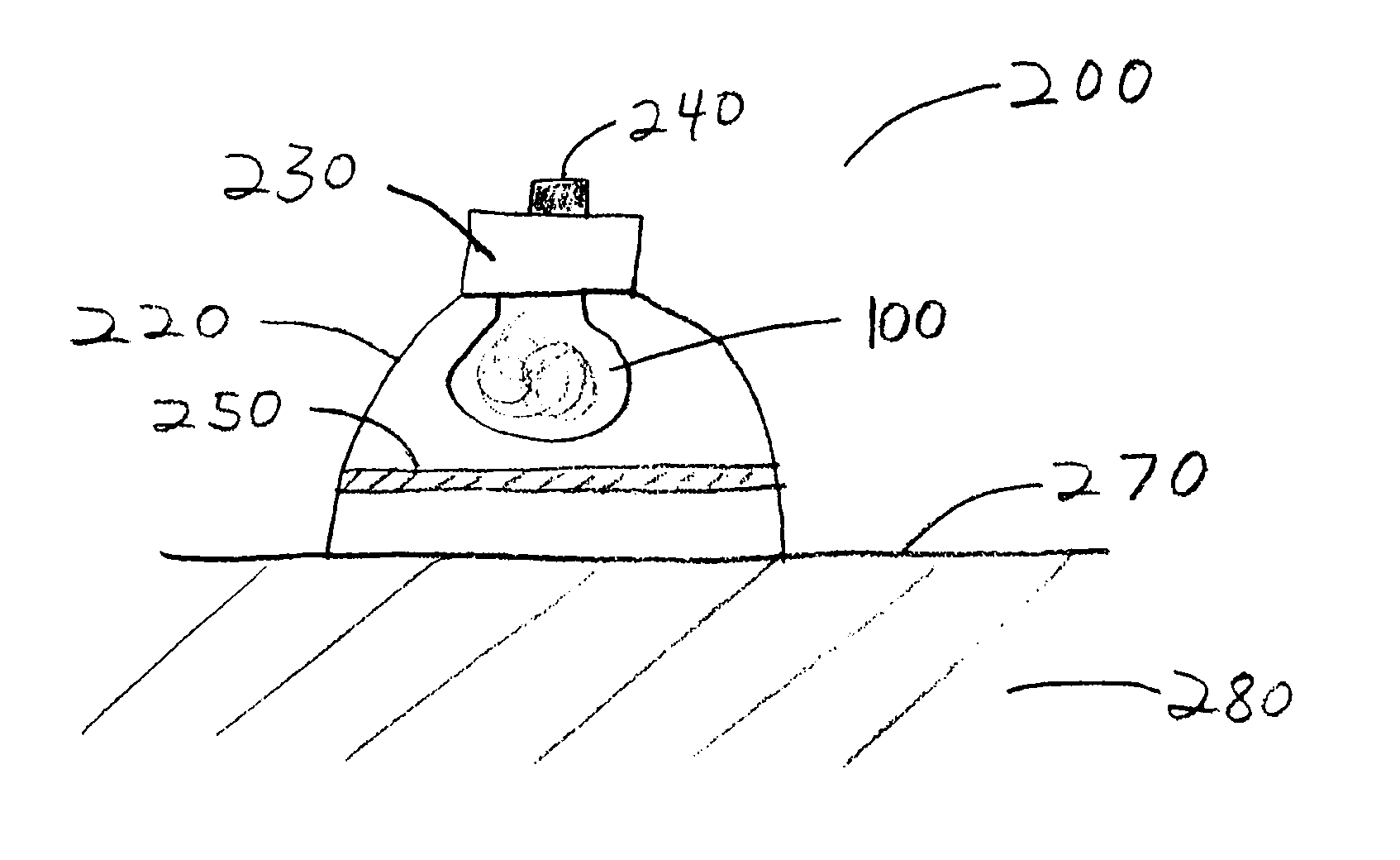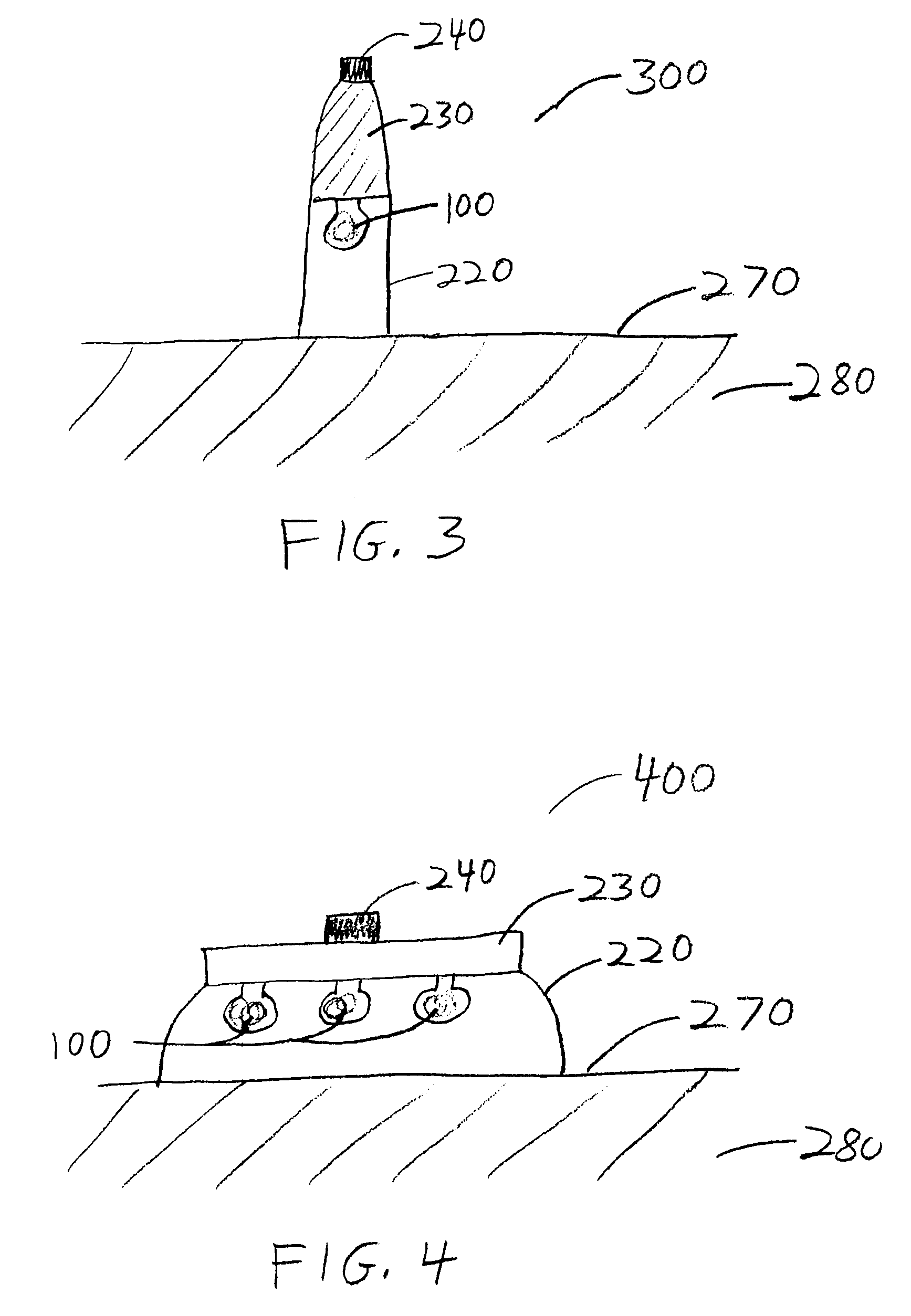System and apparatus for dermatological treatment
a dermatological treatment and system technology, applied in the field of methods and equipment, can solve the problems of local heating, many safety issues, and energy sources such as lasers or electronic flashlamps, and achieve the effects of facilitating optical radiation, reducing the amount of infrared radiation, and preventing other portions of the tissue from being exposed
- Summary
- Abstract
- Description
- Claims
- Application Information
AI Technical Summary
Benefits of technology
Problems solved by technology
Method used
Image
Examples
example 1
[0092]FIG. 6A shows a photograph of a raised cherry angioma that measures about 5 mm across. The angioma was treated in accordance with certain exemplary embodiments of the present invention by exposing it to a single pulse of optical radiation provided by an M3 photographic flashbulb. A reflecting arrangement was provided around the combustion lamp, and no filtering of the optical radiation was used. The radiation was provided through an aperture positioned over the cherry angioma. The fluence of the applied radiation was about 9-10 J / cm2, and the total energy provided in the single pulse was about 4 J. The pulse duration was about 10-15 milliseconds.
[0093]Some initial darkening and crusting of the angioma was observed within the first week. The appearance of the angioma about six weeks after treatment is shown in a photograph of FIG. 6B, taken at the same magnification as the photograph shown in FIG. 6A. There appears to be a marked improvement in the appearance of this defect, wi...
example 2
[0094]FIG. 7A shows a photograph of a regular (flat) angioma that is about 4 mm in diameter. This angioma was exposed to a single pulse of unfiltered optical radiation provided by an M3 photographic flashbulb, in accordance with exemplary embodiments of the present invention. A reflecting arrangement was provided around the combustion lamp, and the radiation was provided through an aperture positioned over the angioma. The fluence of the applied radiation was about 9-10 J / cm2, and the total energy provided in the single pulse was about 4 J. The pulse duration was about 10-15 milliseconds.
[0095]Some immediate raising and darkening of the angioma was observed, and some crusting of the angioma occurred within the first week. The appearance of the angioma about six weeks after treatment is shown in a photograph of FIG. 7B. The angioma appears significantly lighter and smaller. A small amount of damage to the skin surrounding the angioma is evident in the photograph of FIG. 7B, which may...
example 3
[0096]A brown age spot (lentigo) that measures about 3 mm across, shown in a photograph of FIG. 8A, was treated by exposing it to a single pulse of optical radiation in accordance with exemplary embodiments of the present invention. The unfiltered radiation was provided by an M3 photographic flashbulb situated in a reflective housing. An aperture was positioned over the lentigo. The total fluence of the radiation pulse was about 9-10 J / cm2, and the applied energy was about 4 J. The pulse duration was about 10-15 milliseconds.
[0097]Some initial smoothing of the lentigo was observed, and darkening of the lentigo occurred within the first day that faded within about one week. The appearance of the lentigo about six weeks after treatment is shown in a photograph of FIG. 8B. Although not visible in this grayscale image of FIG. 8A, the brownish appearance of the lentigo shown in the photograph of FIG. 8A is significantly reduced, and the darker areas in the photograph of FIG. 8B are more ...
PUM
 Login to View More
Login to View More Abstract
Description
Claims
Application Information
 Login to View More
Login to View More - R&D
- Intellectual Property
- Life Sciences
- Materials
- Tech Scout
- Unparalleled Data Quality
- Higher Quality Content
- 60% Fewer Hallucinations
Browse by: Latest US Patents, China's latest patents, Technical Efficacy Thesaurus, Application Domain, Technology Topic, Popular Technical Reports.
© 2025 PatSnap. All rights reserved.Legal|Privacy policy|Modern Slavery Act Transparency Statement|Sitemap|About US| Contact US: help@patsnap.com



